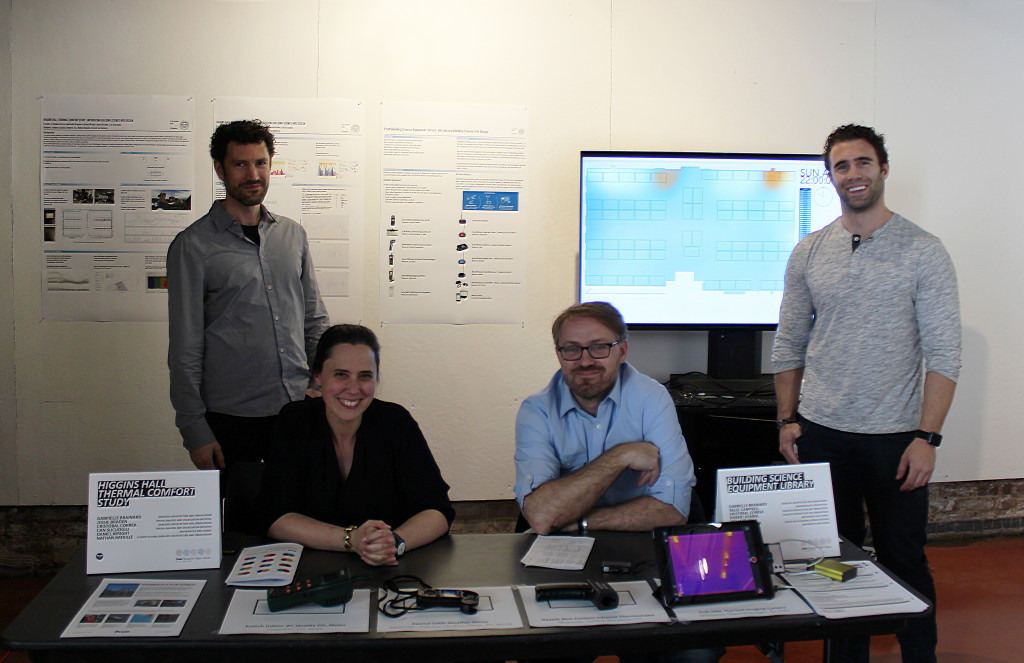Knowledge of building science – how buildings perform with respect to energy efficiency, durability, comfort, and health – is a key aspect of sustainable architectural design. However, methods of teaching building science, which are primarily lecture-based, can fail to engage architecture students who are accustomed to the project-based pedagogy of the design studio.

Sirovich Family Student Fellow – Nathan Bataille
STEAMplant Faculty Members – Gabrielle Brainard, Cristobal Correa, Jessie Braden, and Daniel Wright
How are you feeling right now? Are you too hot? Too cold? How does the environment and your physiology affect your experience of a building? To answer these questions, Architecture Professors Gabrielle Brainard and Cristobal Correa installed a network of temperature and humidity sensors in a studio in Pratt’s Higgins Hall. As the sensors gathered data about the space, the professors surveyed the studio occupants – 60 architecture graduate students – about their thermal comfort.
Working with Mathematics Professor Dan Wright and SAVI Lab Director Jessie Braden, Correa and Brainard analyzed and visualized the results, generating insights by combining data about people and buildings, and seeking novel ways to represent non-visual phenomena like comfort. The project also has a pedagogical aim, engaging students in hands-on learning about building science by using the school as a living laboratory to make abstract scientific concepts more real.
In June 2019, the team presented their work at the 2019 BTES conference, University of Massachusetts Amherst. You can read their research paper, “Classroom as Laboratory: Engaging Architecture Students in Hands-on Building Science Research,” here.
